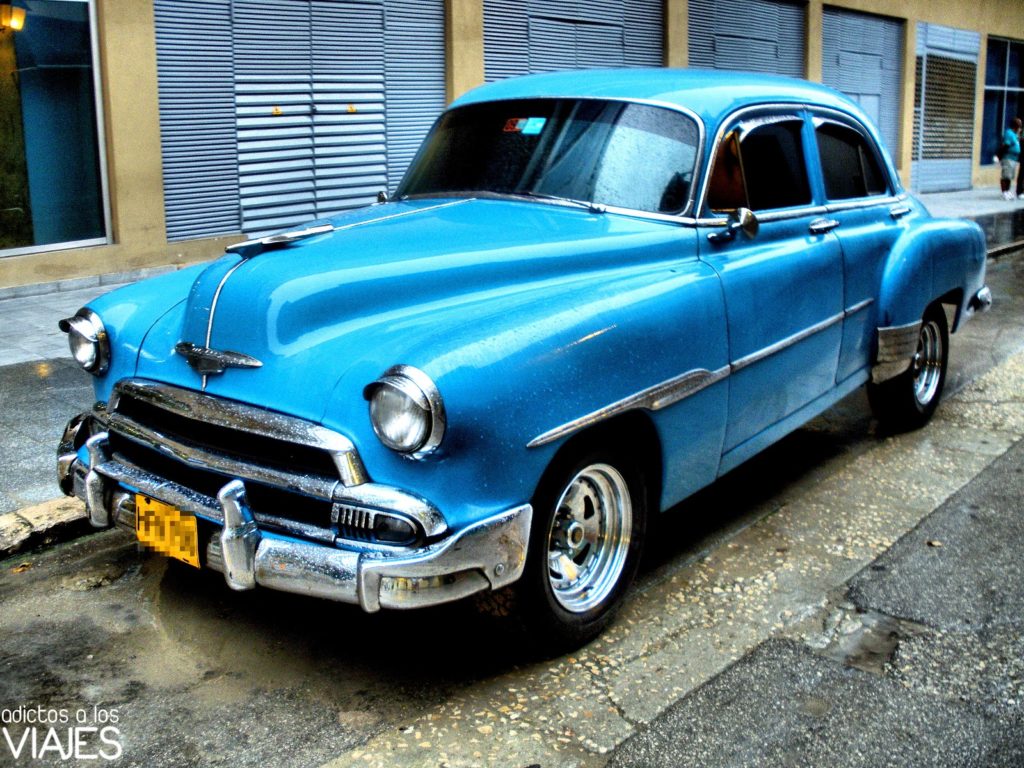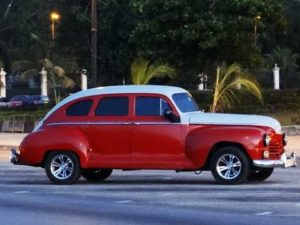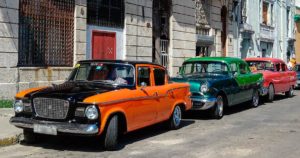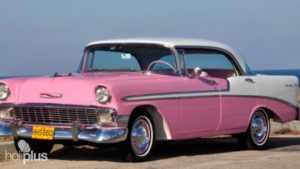 LOS “ALMENDRONES” CUBANOS, ENTRE LA VIDA Y LA MUERTE.
LOS “ALMENDRONES” CUBANOS, ENTRE LA VIDA Y LA MUERTE.
Nadie es capaz de precisar cuántos miles de autos antiguos ruedan por las calles cubanas, donde, lo mismo en el extremo oriental que en la parte oeste de la isla, todavía están en uso modelos con más de 60 años de vida.
Las cifras varían desde los 60.000 hasta 75.000, pero lo único cierto es que en la isla conviven tres generaciones de automóviles, desde los norteamericanos, de los años 40 y 50 del pasado siglo, hasta las más modernas marcas de la contemporaneidad, pasando por una flotilla de autos soviéticos de las marcas Lada y Moscovicht.
Desde que Washington decretó el bloqueo contra Cuba, en febrero de 1962, a la isla no pueden entrar nuevos vehículos provenientes de Estados Unidos, pero los viejos autos han sobrevivido gracias al ingenio de los cubanos.
Los cubanos han logrado mantener esos viejos autos con piezas que fueron ideadas para otras máquinas o concebidas para otros usos, y las que no han logrado adaptar las fabrican de manera artesanal.
Pero parece que tienen los días contados los “Almendrones”, como son conocidos los viejos autos en aparente alusión a que muchos tienen la forma de una almendra.”A la edad que tengo y las situaciones que se me avecinan, lo entrego al estado para que lo haga chatarra y lo venda. Para mí sería la solución más lógica para no seguir arrastrando esa cantidad de carros viejos”, dijo Aníbal Ibáñez, dueño de un taller de mecánica en La Habana. “Cuando hablas con personas que tienen esos carros, ellos plantean que iban a tener un valor extraordinario si los americanos venían, y eso es absurdo”, aseguró el avezado mecánico.
Otros expertos opinaron que si eso sucede, los potenciales compradores no serán coleccionistas tradicionales, que buscan bajo kilometraje y automóviles en perfectas condiciones, sino personas interesadas en conservar un pedazo de la historia de la isla.
Y es que mientras uno de esos coches antiguos puede parecer auténtico a primera vista, un examen más detallado revelaría drásticas modificaciones internas, que pueden incluir hasta el cambio del motor de gasolina por uno más moderno de diésel. “Como no había piezas originales, hemos tenido que inventar”, indicó Ibáñez.
Pero también poseer esos autos es un orgullo para muchos que se reúnen en el llamado ‘Club de Autos Clásicos A lo cubano’, que un fin de semana de cada mes realiza exhibiciones públicas de automóviles muy bien conservados. En esas exhibiciones se pueden ver un Mercury Monterrey, un Ford Crown Victoria de 1955, ejemplares de Chevrolet Impala y Corvette, un Cadillac El Dorado, y hasta un Messerschmitt de origen alemán. Los dueños de esos autos, que los cuidan como a la niña de sus ojos, apuestan a la idea de que sean conservados como atracción turística, algo que ya viene ocurriendo con la compañía Grand Car auspiciada por la Oficina del Historiador de la Ciudad.
Como si fuera poco, en la zona colonial de La Habana está enclavado el Museo del Automóvil, que tiene con un patrimonio de más de 30 vehículos fabricados entre 1905 y 1989. Aunque la mayoría fueron producidos en Estados Unidos, también se exhiben ejemplares argentinos, españoles, ingleses, italianos y franceses como un Citron de 1977 propiedad de Celia Sánchez, asistente de Fidel Castro.
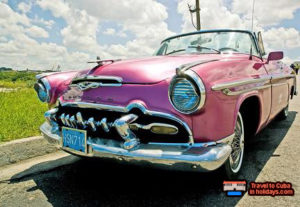 THE CUBAN “ALMENDRONES”, BETWEEN LIFE AND DEATH.
THE CUBAN “ALMENDRONES”, BETWEEN LIFE AND DEATH.
Nobody is able to specify how many thousands of old cars roll through the streets of Cuba, where, as far east as in the western part of the island, models with more than 60 years of life are still in use.
The figures vary from 60,000 to 75,000, but the only certain thing is that three generations of cars coexist on the island, from North Americans, from the 40s and 50s of the last century to the most modern contemporary brands, including a flotilla of Soviet cars of the Lada and Moscovicht brands.
Since Washington declared the blockade against Cuba, in February 1962, the island cannot enter new vehicles from the United States, but the old cars have survived thanks to the ingenuity of Cubans.
The Cubans have managed to keep those old cars with pieces that were designed for other machines or designed for other uses, and those that have not been able to adapt them in a traditional way.
But it seems that the days have been counted the “Almendrones”, as the old cars are known in the apparent allusion that many have the shape of an almond. “At the age I have and the situations that lie ahead, I give it to the state for to make it scrap and sell it, for me it would be the most logical solution to keep dragging that number of old cars, “said Aníbal Ibáñez, owner of a mechanics workshop in Havana. “When you talk to people who have those cars, they say they would have extraordinary value if the Americans came, and that’s absurd,” said the seasoned mechanic.
Other experts thought that if that happens, potential buyers will not be traditional collectors, looking for low mileage and cars in perfect condition, but people interested in keeping a piece of the history of the island.
And while one of those old cars may seem authentic at first glance, a more detailed examination would reveal drastic internal modifications, which can include the change of the gasoline engine to a more modern diesel engine. “Since there were no original pieces, we had to invent,” Ibáñez said.
But also owning these cars is a source of pride for many who meet in the so-called ‘Club de Autos Clásicos a lo Cubano’, which one weekend of each month carries out public exhibitions of very well preserved cars. In those exhibitions you can see a Mercury Monterrey, a Ford Crown Victoria of 1955, copies of Chevrolet Impala and Corvette, a Cadillac El Dorado, and even a Messerschmitt of German origin. The owners of these cars, who take care of them as the apple of their eyes, bet on the idea of keeping them as a tourist attraction, something that has been happening with the company Grand Car sponsored by the Office of the City Historian.
As if that were not enough, in the colonial zone of Havana is located the Automobile Museum, which has a heritage of more than 30 vehicles manufactured between 1905 and 1989. Although most were produced in the United States, Argentine specimens are also on display, Spanish, English, Italian and French as a Citron of 1977 owned by Celia Sánchez, Fidel Castro’s assistant.
Agencies/ RHC/ Pedro M. Otero/ Internet Photos/ Excerpts/ Arnoldo Varona/ www.TheCubanHistory.com
THE CUBAN HISTORY, HOLLYWOOD.
OVER 7,000 ARTICLES ABOUT CUBA. ( SEARCH > www.TheCubanHistory.com



 < THE CUBAN "ALMENDRONES", Between Life and Death. PHOTOS.
< THE CUBAN "ALMENDRONES", Between Life and Death. PHOTOS.